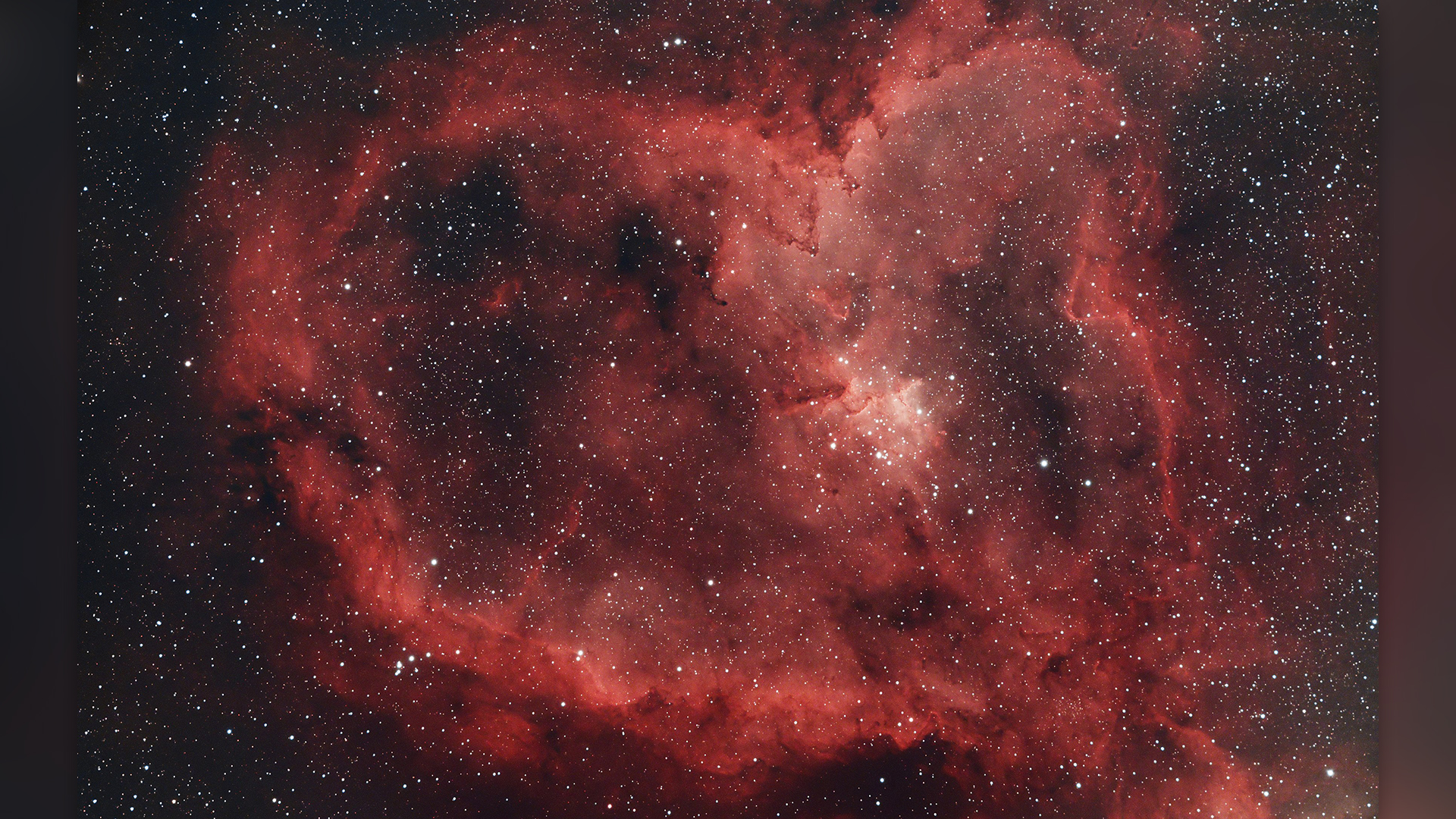
From a teddy bear on Mars to Godzilla in a gas cloud, it's easy to see pretty much anything you want on the seemingly infinite canvas of space. And this year, on Valentine's Day, we choose to see love.
Heart-shaped objects are plentiful across the cosmos and come from a variety of sources — from extreme events like galactic collisions to the random side effects of brightly burning stars. Here are five of our favorites.
1. Hearts collide
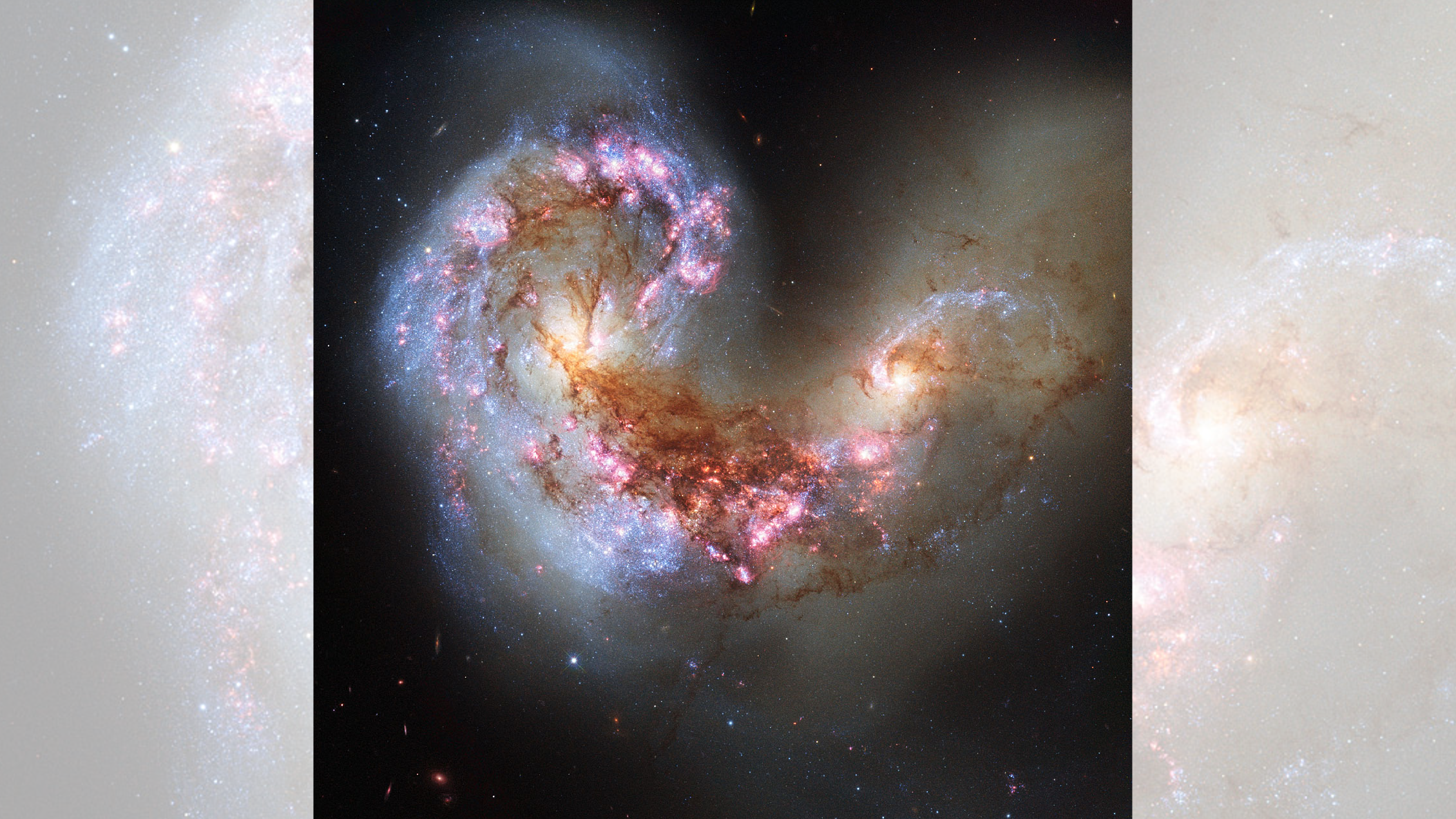
The laws of attraction are a bit simpler in space than on Earth: In space, the more massive you are, the more stuff you're likely to attract. In this photo captured by the Hubble Space Telescope, two galaxies of roughly similar size show off their mutual attraction as they slowly but spectacularly collide, twisting each other into an iconic heart shape during a protracted, gravitational tug-of-war.
The two galaxies — located 60 million light-years from Earth and named the Antennae galaxies, or NGC 4038 and NGC 4039 — are in the midst of a long courtship that began about a billion years ago and may last another billion years still, according to NASA. By the time the two galaxies finally become one, billions of new stars will have formed from the pile-up of interstellar gas clouds within the entwined objects.
Some of those stellar newborns are already visible in the long streams of gas extending from the bottom of the galaxies that gave the Antennae galaxies their names.
2. Heart of stone
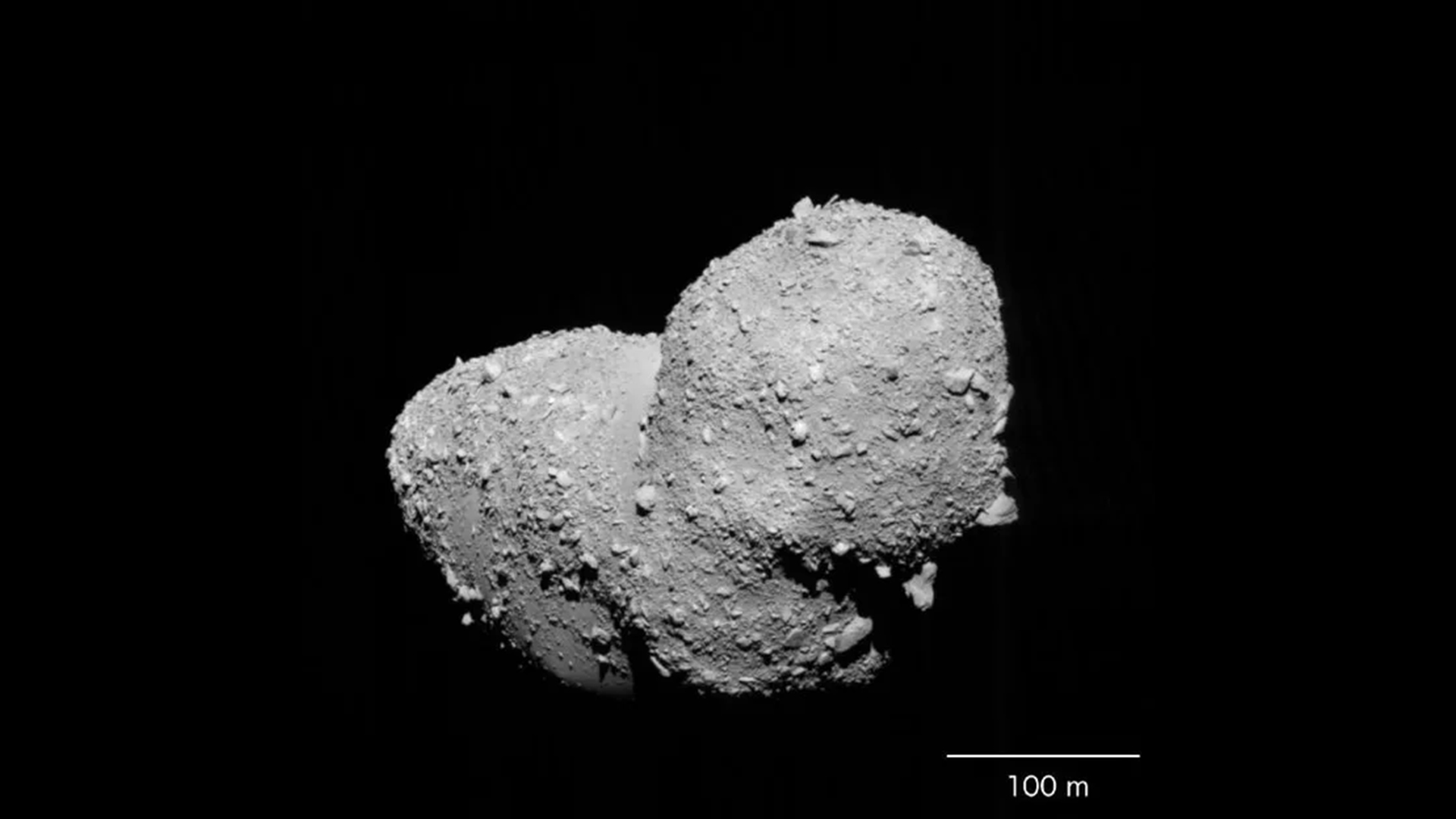
Space rocks can take on a variety of familiar shapes, depending on the angle from which you view them. Rubber duckies, spinning tops and peanuts are common sights in the cosmos — and every once in a while, you may catch a cold, rocky heart out there as well.
The heart shown here is the asteroid Itokawa, a roughly 1,100-foot-long (330 meters) Apollo-class asteroid that makes occasional close approaches to Earth as it whips around the sun once every 18 months. The rock is big enough, and comes close enough to Earth's orbit, that it is considered a potentially hazardous asteroid — even though no collisions are likely for at least the next 100 years.
Despite its solid appearance, this heart is surprisingly fragile; when Japan's Hayabusa spacecraft landed on Itokawa in November 2005 during the world's first asteroid sample return mission, scientists learned that it was not a solid rock but a vast collection of rubble that has managed to stay coherent for more than a billion years.
3. Heart of gas

Stars ornament the night sky like jewels — but they also sculpt the sky.
The object IC 1805, nicknamed the Heart Nebula, is a spectacular result of that stellar sculpting. A group of bright stars, some of which are 50 times more massive than the sun, sits at the nebula's heart. These big stars generate powerful stellar wind that have pushed and molded the surrounding gas into the twin-lobed heart visible here.
Nebulas are colorful clouds of expanding gas that can form in a variety of ways and take on a seemingly endless number of shapes. Check out some of our favorites here, including the shrieking Skull and Crossbones Nebula and the all-seeing God's Eye Nebula.
4. Heart of ice
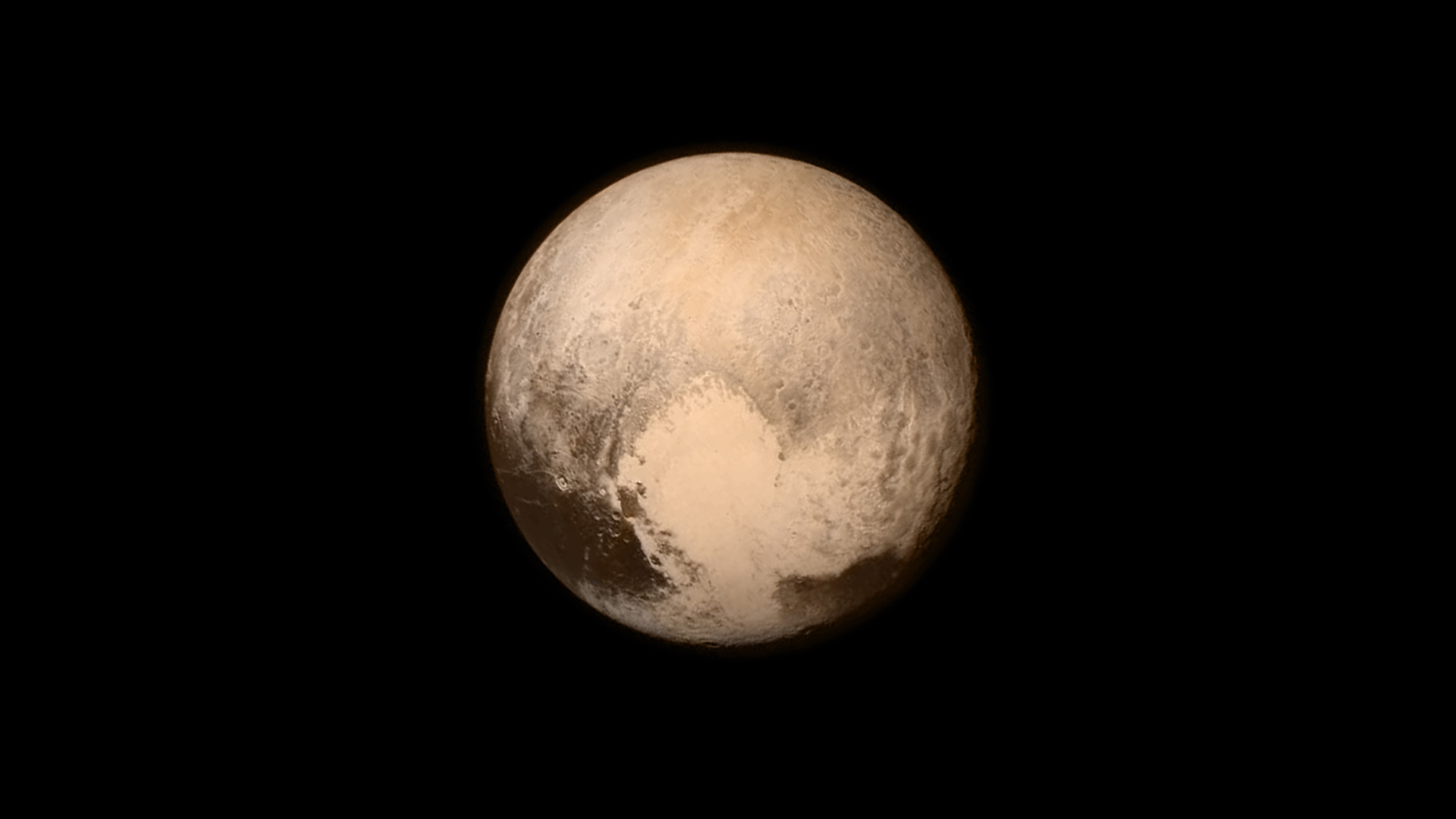
One of the most famous hearts in our solar system sits on the icy surface of the dwarf planet Pluto.
Pluto's iconic "heart" is actually a huge plain of nitrogen ice stretching more than 990 miles (1,590 kilometers) wide. The region also has a distinct "heartbeat" that helps drive atmospheric circulation patterns on the planet, observations from NASA's New Horizons spacecraft revealed. The heart's nitrogen ice vaporizes in the sun during the day before condensing into ice again at night, causing nitrogen winds to blow while shaping surface features on Pluto.
The heart is officially named Tombaugh Regio, after American astronomer Clyde Tombaugh, who discovered Pluto in 1930. It may not be the most romantic name, but it sure beats Cthulhu Macula — a long, dark region sitting on Pluto's equator just to the south.
5. Hearts of Mars
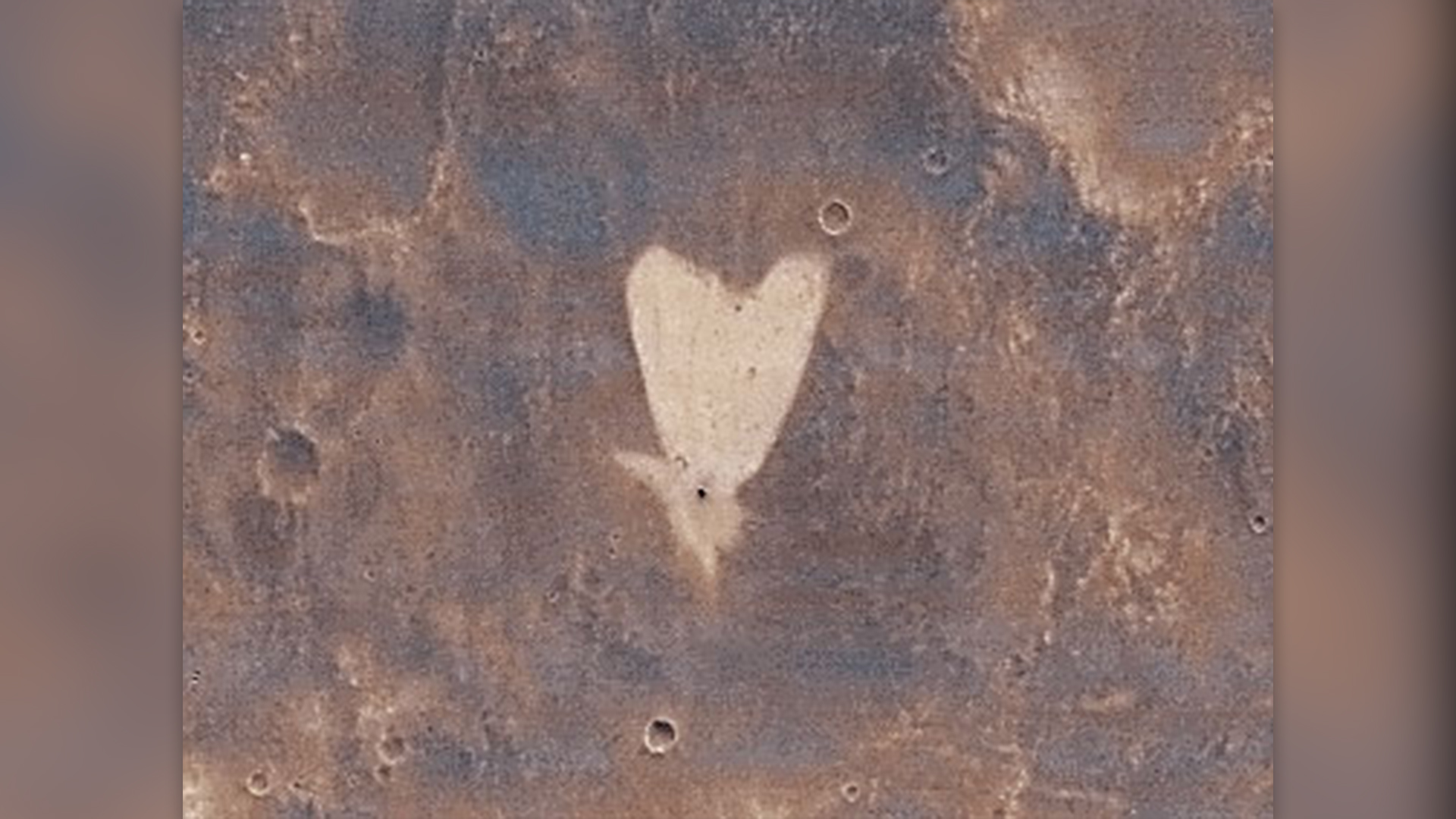
Finally, a heart born from cosmic violence.
This bright-colored feature on the surface of Mars may look like a poorly executed tattoo, but it is in fact the result of an ancient meteorite impact. A black circle marks the impact crater at the heart's bottom tip; this impact likely blasted darker surface material away from the crash site, revealing the brighter-colored heart of dust underneath. Measuring just about 3,300 feet (1 km) long, you could fit thousands of these mini-hearts into Pluto's heart of ice.
The Red Planet is, fittingly, loaded with heart-shaped features — so many that NASA's Mars Reconnaissance Orbiter, which took this image, has shared "Mars Valentine" photos for three years running.







